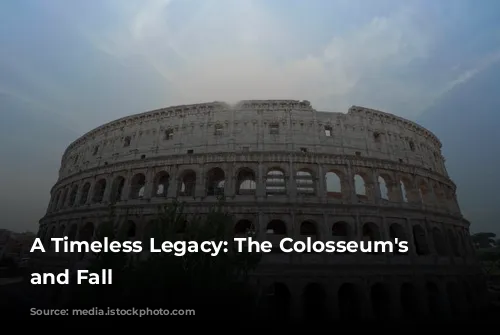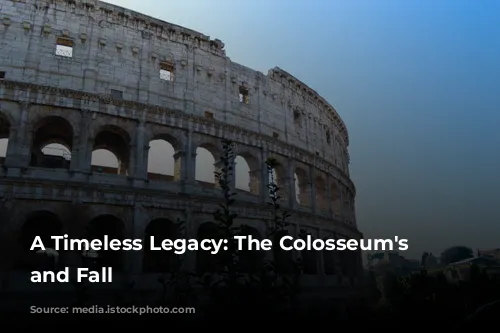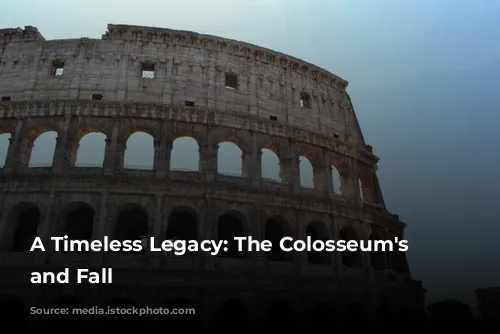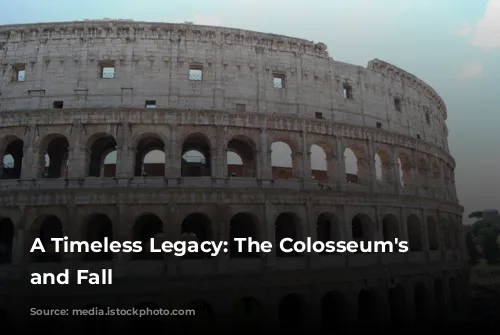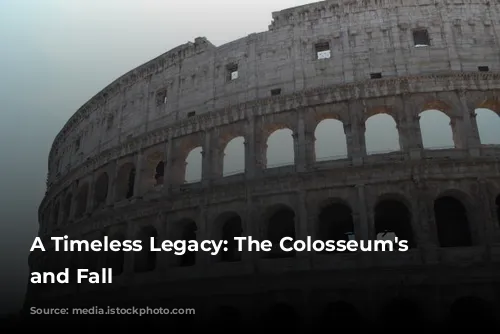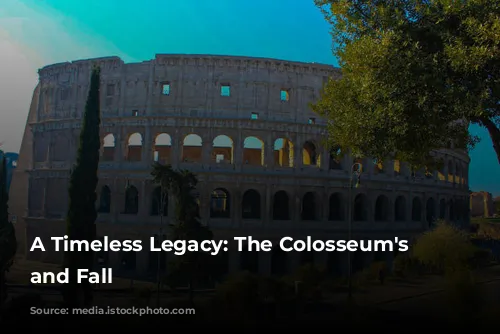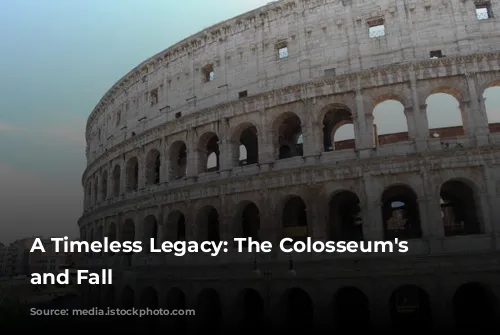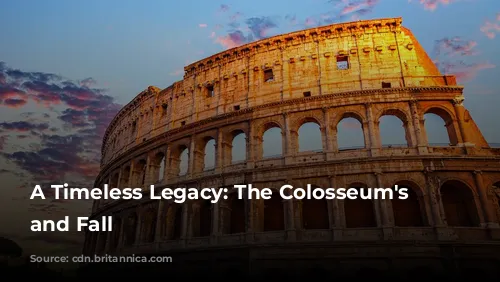The Colosseum, a magnificent monument to Roman engineering, stands as a symbol of the empire’s enduring legacy. It’s not just a captivating historical site, but also a significant contributor to Italy’s economy. In 2018, the Colosseum, Roman Forum, and Palatine Hill attracted millions of tourists, generating over $63.3 million in revenue, making it Italy’s most lucrative tourist attraction. This impressive figure underscores the Colosseum’s lasting allure.
From Glory to Neglect: The Colosseum’s Troubled Past
Time, however, has not been kind to the Colosseum. After the Western Roman Empire’s decline, the once-grand arena fell into disrepair. In the 12th century, powerful families like the Frangipane and Annibaldi turned the Colosseum into a fortress, adapting its imposing structure to their own needs. The late 15th century saw Pope Alexander VI permit the Colosseum to be used as a quarry, its stones plundered for building materials. Over a thousand years of neglect took their toll, leaving the Colosseum a shadow of its former glory. Thankfully, the 1990s saw state-funded restoration efforts begin, marking a crucial step towards preserving this invaluable piece of history.
A Symbol of Imperial Might: The Colosseum’s Birth
The Colosseum’s construction was born from the ambition of Roman emperors. It was built as part of a grand plan to revitalize Rome after the tumultuous year of the four emperors (69 CE). Emperor Vespasian, like other emperors before him, envisioned the Colosseum as a grand entertainment venue. Its massive structure was destined to host gladiatorial fights, thrilling animal hunts, and even elaborate mock naval battles, providing spectacle and entertainment for the masses.
Built on Blood and Stone: The Colosseum’s Origins
The Colosseum’s construction was a monumental endeavor. Under the reign of Emperor Vespasian, construction began between 70 and 72 CE, reaching completion in 80 CE under Vespasian’s son, Emperor Titus. The fourth story was added by Emperor Domitian in 82 CE. This architectural marvel was financed by the spoils of war, specifically from the plunder of Jerusalem, a tragic reminder of the empire’s vast power and the human cost of its expansion. The labor force was comprised of Jewish slaves captured during the siege of Jerusalem. This dark truth casts a shadow on the Colosseum’s glorious facade.
A Monument of Engineering: The Colosseum’s Design and Construction
The Colosseum stands as a testament to Roman architectural ingenuity. This elliptical amphitheater, also known as the Flavian Amphitheatre, was meticulously crafted from stone, concrete, and tuff. Rising four stories high, it measured an impressive 620 by 513 feet, capable of accommodating as many as 50,000 spectators. Its iconic design, featuring three tiers of arcades adorned with Doric, Ionic, and Corinthian columns, set the stage for the Renaissance’s architectural revival. The Colosseum’s sturdy construction, a blend of travertine, tufa, and concrete, ensured its durability, allowing it to endure the test of time.
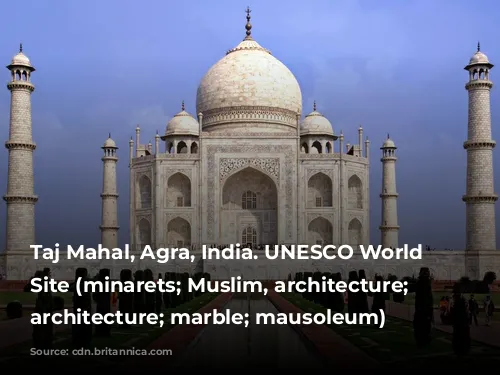
A Stage for Spectacle: The Colosseum’s Use
The Colosseum wasn’t just a building; it was a stage for thrilling spectacles. It hosted thousands of gladiatorial combats, pitting warriors against each other in a brutal display of skill and strength. The Colosseum also saw man-versus-beast contests, where gladiators faced off against wild animals. Furthermore, the arena even hosted mock naval engagements, bringing the thrill of naval warfare to the heart of Rome. The Colosseum’s legacy as a venue for these dramatic events remains an enduring part of its identity.
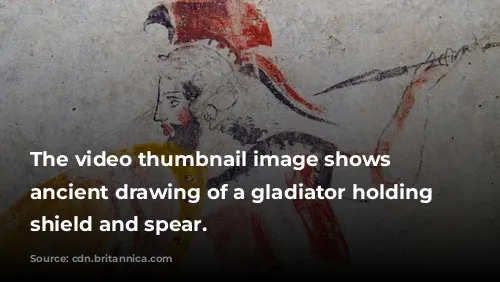
From Glory to Decay: The Colosseum’s Decline
After centuries of glory, the Colosseum faced its own challenges. In medieval times, it was repurposed as a church, a stark contrast to its original use. The Colosseum also served as a fortress for prominent Roman families, the Frangipane and Annibaldi. Over time, lightning strikes, earthquakes, vandalism, and pollution took their toll on the Colosseum, leaving it in a state of decline. For over a thousand years, the Colosseum was treated as a quarry, its marble seats and decorative materials plundered. This neglect stripped the Colosseum of its grandeur, leaving it a mere shadow of its former self.
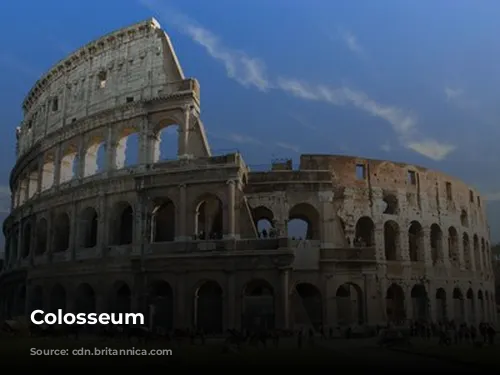
A Monument Restored: The Colosseum’s Revival
The 19th century marked a turning point in the Colosseum’s fate. Notable preservation efforts began, spearheaded by Pope Pius VIII. The 1990s saw a significant restoration project, breathing life back into the aging structure. Today, the Colosseum stands as one of Rome’s most visited tourist attractions, welcoming millions of visitors annually. Regular exhibitions showcasing the culture of ancient Rome further enhance the Colosseum’s appeal, ensuring that its legacy endures for future generations.
